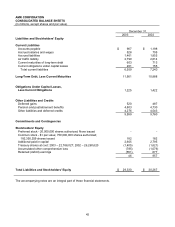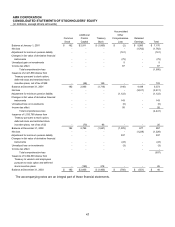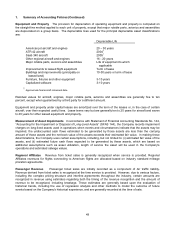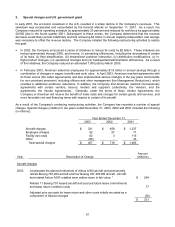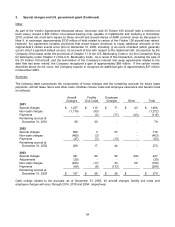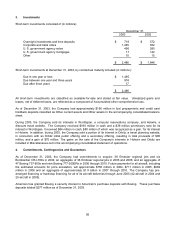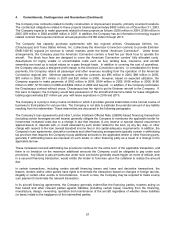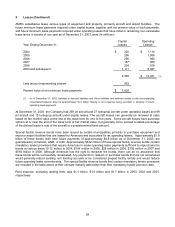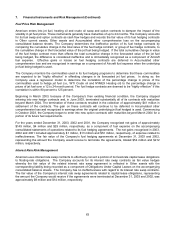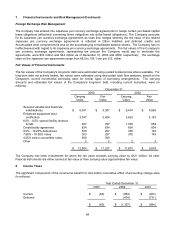American Airlines 2003 Annual Report Download - page 57
Download and view the complete annual report
Please find page 57 of the 2003 American Airlines annual report below. You can navigate through the pages in the report by either clicking on the pages listed below, or by using the keyword search tool below to find specific information within the annual report.
55
2. Special charges and U.S. government grant (Continued)
U.S. government grant
In April 2003, the President signed the Emergency Wartime Supplemental Appropriations Act, 2003 (the
Appropriations Act), which includes provisions authorizing payment of $2.3 billion to reimburse air carriers for
increased security costs in proportion to the amounts each carrier had paid or collected in passenger security and
air carrier security fees to the Transportation Security Administration (the Security Fee Reimbursement). The
Company’s Security Fee Reimbursement was $358 million (net of payments to independent regional affiliates) and
is included in U.S. government grant in the accompanying consolidated statement of operations. The
Appropriations Act also limits the total cash compensation for the two most highly compensated named executive
officers in 2002 for certain airlines, including the Company, during the period April 1, 2003 to April 1, 2004 to the
amount of salary received by such officers, or their successors, in 2002. A violation of this executive
compensation provision would require the carrier to repay the government its Security Fee Reimbursement. The
Company does not anticipate any difficulties in complying with this limitation on executive compensation.
On September 22, 2001, President Bush signed into law the Air Transportation Safety and System Stabilization
Act (the Stabilization Act). The Company received a total of $866 million from the U.S. government under the
airline compensation provisions of the Stabilization Act. For the years ended December 31, 2002 and 2001, the
Company recognized approximately $10 million and $856 million, respectively, which is included in U.S.
government grant on the accompanying consolidated statements of operations.
In addition, the Stabilization Act provides for compensation to individual claimants who were physically injured or
killed as a result of the terrorist attacks of September 11, 2001. Furthermore, the Stabilization Act provides that,
notwithstanding any other provision of law, liability for all claims, whether compensatory or punitive, arising from
the terrorist-related events of September 11, 2001 against any air carrier shall not exceed the liability coverage
maintained by the air carrier. Based upon estimates provided by the Company’s insurance providers, the
Company recorded a liability of approximately $2.3 billion for claims arising from the events of September 11,
2001, after considering the liability protections provided for by the Stabilization Act. The Company has also
recorded a liability of approximately $637 million related to flight 587, which crashed on November 12, 2001. In
addition, the Company has recorded a receivable for these amounts, which the Company expects to recover from
its insurance carriers as claims are resolved. These insurance receivables and liabilities are classified as Other
assets and Other liabilities and deferred credits on the accompanying consolidated balance sheets, respectively,
and are based on reserves established by the Company’s insurance carriers. These estimates may be revised as
additional information becomes available concerning the expected claims. One of the Company’s insurance
carriers has entered liquidation. The carrier provides approximately five percent of the Company’s coverage
related to the events of September 11, 2001 and flight 587, as well as other covered items. This results in
approximately $100 million in receivables, net of reserves, from the insurance carrier as of December 31, 2003.
The Company expects to recover the net receivable via the liquidation process or other means available.


